New Zealand Dollar Set for "Tactical Outperformance" say TD Securities as Strategists Warm to the Kiwi Currency
- Written by: James Skinner
-Oversold NZD offers "tactical" opportunity say TD Securities.
-NZD/CAD is set to move higher, TD look to sell the AUD/NZD rate.
-Call follows similar EUR/NZD recommendation by Morgan Stanley.
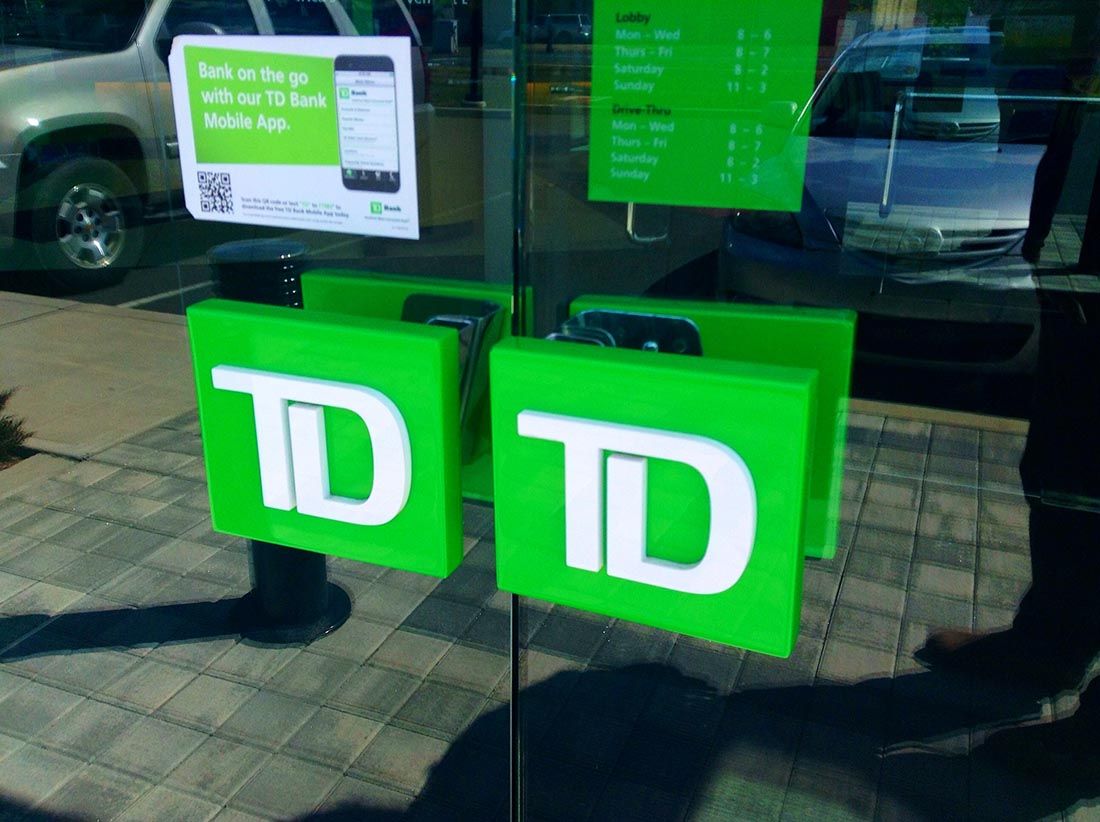
© Mike Mozart, reproduced under CC licensing
The New Zealand Dollar has fallen sharply in recent months, making it one of the worst performing developed world currencies in the second-quarter, but strategists at Toronto-based investment bank TD Securities say the rout has gone far enough and the Kiwi currency now offers an attractive "risk/reward" to those brave enough to get behind it.
New Zealand's Dollar had seen a strong start to the year when it rose by more than 5% over the US Dollar during the eight weeks to the end of February however, it has since been undermined by a loss of "yield support" at a time when short-term interest rates have returned as the dominant driver of currency markets.
This loss of yield support saw the currency fall by nearly 7% against the US Dollar between April 17 and May 23, leaving it trading at a 2.5% loss for the 2018 year-to-date. It has fallen by more than 5% against the safe-have Japanese Yen and close to 4% relative to the Norwegian Krone, while having eked out gains over just three developed world currencies.
"With NZD longs largely cleansed and the currency significantly lagging its terms of trade, we think the risk/reward is beginning to look quite favorable for a tactical NZD outperformance. Our HFFV estimate points to NZD ~4% cheap vs the USD, but we think there may be more juice to squeeze on the crosses as it could be some time before we get a more convincing signal for a broad based USD reversal," says Mazen Issa, a senior FX strategist at TD Securities.
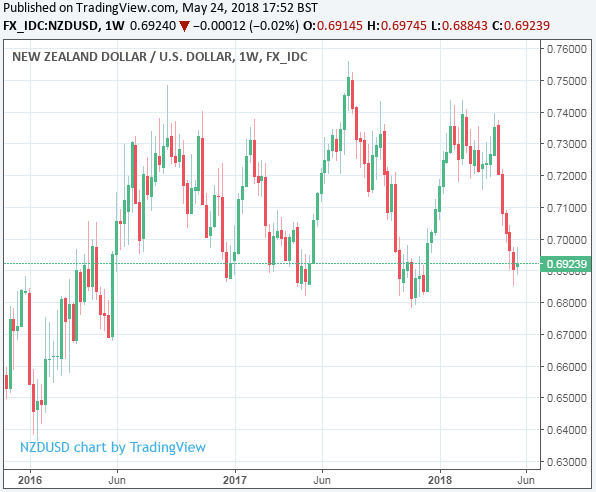
Above: NZD/USD rate shown at weekly intervals.
TD Securities' call comes around the same time strategists at Morgan Stanley advise clients that they get "tactically long" the New Zealand Dollar in order to exploit what are now "oversold" conditions, which begs the question of whether the Kiwi currency has reached a turning point and if others in the analyst community will soon follow suit.
It also comes hard on the heels of the May Reserve Bank of New Zealand monetary policy meeting, after which Governor Adrian Orr told the media that Kiwi interest rates will most likely remain at their current record lows for "a considerable period of time" and that the next move in the cash rate could be either up or down.
"Regular readers will know that we have been warming up to the NZD. Newly minted Governor Orr has not helped its prospects as he casually introduced two-way risk around the cash rate at his first MPS press briefing. Here, we are willing to call his bluff," Issa adds.
Orr's May statements snuffed out the last remaining hopes for an interest rate rise that segments of the market may have still harboured and even put the prospect of a future rate cut onto the market's agenda, which was seen setting the Kiwi up for yet further losses during the months ahead.
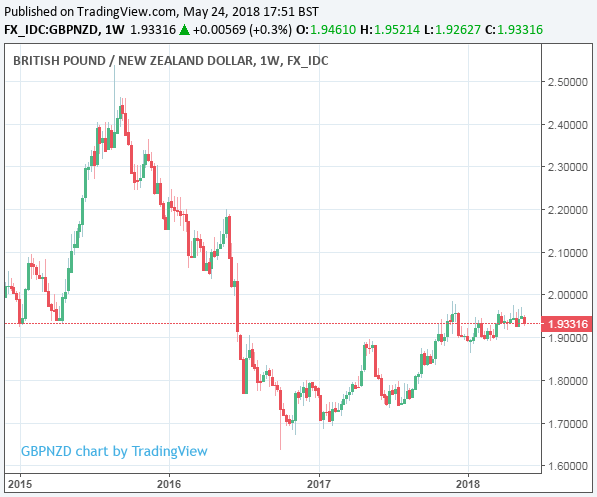
Above: Pound-to-New-Zealand-Dollar
"This is part of the communication strategy, we think, to strongly signal that they are not looking to raise rates for quite some time (indeed, we expect this to be Q1-2019 at the earliest). That said, the OIS curve is quite flat for the next 12m and data surprises have reached depressed levels," Issa adds.
Higher yielding commodity currencies like the New Zealand and Australian Dollars have been super sensitive to negative economic news of late because interest rates are now rising elsewhere in the developed world while, in the Antipodes, they are at record lows. As a result, the US Federal Funds rate is now higher than the Aussie cash rate and the same as the NZ cash rate. So too are bond yields.
This means that investors are incentivised to sell Kiwi or Aussie Dollars and to buy the greenback in order to invest in the American bond market rather than vice versa. This is the opposite of how the so called carry trade, which has traditionally propped up the Antipodean currencies relative to their international peers, used to work.
"The NZ economy is running a solid positive output gap, a tight labor market and will be a beneficiary of fiscal easing. Against this backdrop, we doubt that a rate cut is a real possibility. But, we will give the RBNZ an “A” for effort and enthusiasm for trying to sound dovish and even looking ahead at the tools at their disposal for the next downturn," Issa writes, in a note Thursday.
New Zealand policymakers can only raise interest rates in response to a rise in inflation that threatens to push the consumer price index above the bank's 1% to 3% target, but Kiwi inflation has remained stubbornly below the midpoint of that target ever since the final quarters of 2012. And any hint of a rate rise being in the cards would only surve to drive the currency higher, which would then reduce domestic inflation by making imported goods cheaper for New Zealanders to buy.
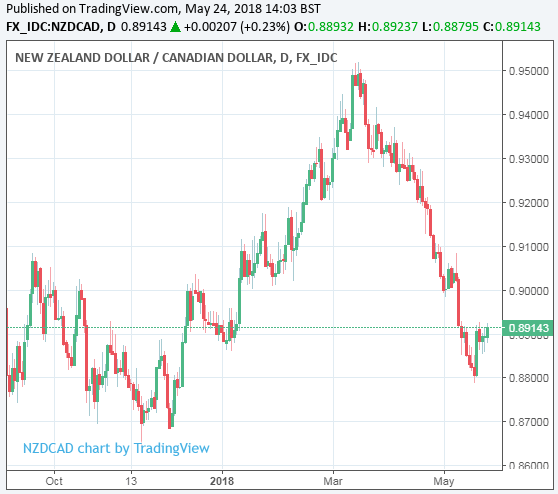
Above: NZD/CAD rate shown at daily intervals.
"We have noted all week about NZDCAD topside and continue to like the risk/reward eyeing a move towards 0.92 especially now as trade rhetoric has heated up with Trump's latest proclamation of tariffs on imported cars. Though details are light, it could throw a monkey wrench into the NAFTA negotiations," says Issa. "We are comfortable in remaining defensive on the CAD, especially as the market continues to price in an absurd amount of tightening for the next 9 months."
Issa and the TD Securities team say the market has begun to price a scenario that is about as downbeat as one can get into Kiwi exchange rates, while ignoring the possibility of upset elsewhere in the world that could drive a corrective move on currency markets. The NZD/CAD rate is just one example.
"AUDNZD is also on our radar, though we are patient. The cross has been quietly trading higher but in line with relative data momentum which appears to be nearing an exhaustion point," Issa writes. "The cross may be nearing a stall point in the 1.09/1.10 area as the RSI is straddling overbought territory. Supports can be found near the 200-day [moving average] just below 1.09 and we are on the lookout for an entry point to sell, to eventually eye a move towards 1.05/1.06."
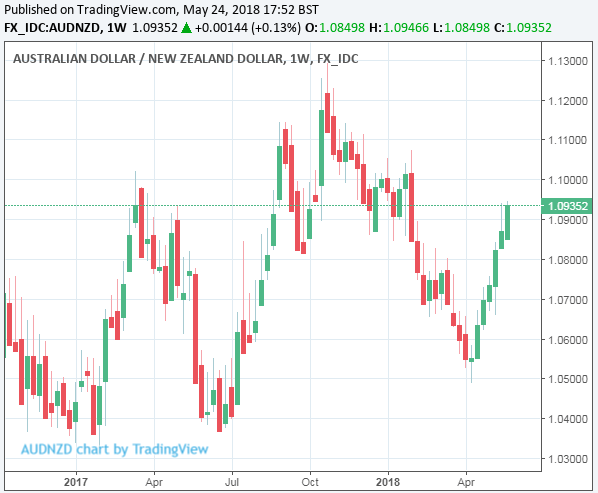
Above: AUD/NZD rate shown at weekly intervals.
Advertisement
Get up to 5% more foreign exchange by using a specialist provider to get closer to the real market rate and avoid the gaping spreads charged by your bank when providing currency. Learn more here




